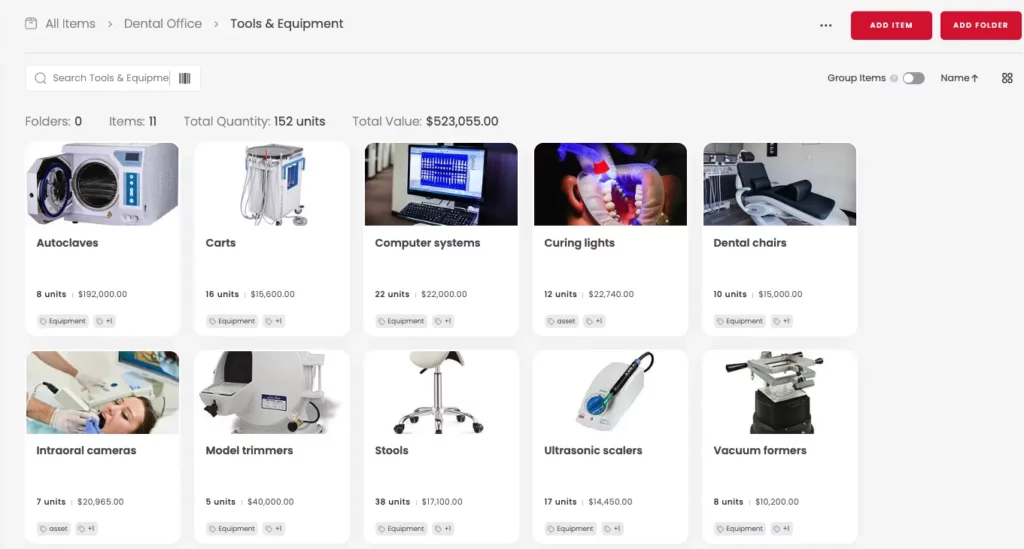Every business relies on physical assets, including equipment, tools, machinery, and technology, to operate efficiently and meet organizational goals. But without a clear asset management strategy, these investments can become liabilities. From unplanned downtime to costly breakdowns, the risks of poor asset tracking are real and can affect your bottom line.
This guide will walk you through the fundamentals of physical asset management, the lifecycle stages of assets, and how to optimize your asset management strategy using the right software. Whether you’re managing a single facility or tracking assets across multiple locations, mastering this process is key to operational efficiency and prolonging the lifecycle of high-value assets.
What Is Physical Asset Management?
The Two Types of Physical Asset Management
There are two primary approaches to managing assets: reactive asset management and proactive asset management. Here’s a little bit more about each approach:
Reactive Asset Management
This approach involves responding to issues when they arise, like fixing equipment after it breaks or replacing tools once they’re lost. While common, reactive management often leads to higher maintenance costs, unplanned downtime, and poor asset performance.
Proactive Asset Management
Proactive management focuses on preventive maintenance, lifecycle planning, and real-time tracking. By anticipating needs and streamlining asset usage, businesses can reduce risk and extend asset lifespan.
Why Is Physical Asset Management Important?
1. It helps your business stay organized
Establishing an asset inventory system helps you streamline operations and eliminate guesswork. With a centralized dashboard, you can manage assets across departments, locations, and teams.
2. It helps you track high-value assets
From laptops to heavy machinery, knowing where your assets are—and who’s using them—is essential for risk management and accountability.
3. It simplifies audits and inventory counts
With barcode or QR code scanning, audits become faster and more accurate. Real-time updates reduce reliance on spreadsheets and manual counts.
4. It improves accounting accuracy
Asset tracking, particularly when done with asset tracking software, supports depreciation forecasting, procurement planning, and financial reporting. It also helps align maintenance schedules with budget cycles, especially when software enables custom alerts tied to specific dates.

6 Stages of the Physical Asset Management Lifecycle
Understanding the asset lifecycle is key to effective asset management. Here’s a brief glimpse at six common stages:
- Procurement – Selecting and acquiring assets based on organizational goals.
- Deployment – Assigning assets to locations or teams.
- Usage – Monitoring asset performance and condition.
- Maintenance – Scheduling preventive maintenance and tracking repairs.
- Audit – Verifying asset location, status, and value.
- Disposal – Retiring or replacing assets at end-of-life.
Lifecycle management ensures that each stage is optimized for cost-effectiveness and sustainability, and with asset tracking software, each stage can be tracked and archived for reference down the road.
How to Get Started with Physical Asset Management
If you’re new to physical asset management or just want to optimize your strategy, start with these steps:
1. Get organized and use asset tags
Start by physically organizing your asset inventory and tagging all physical assets. Use barcodes, QR codes, or, less commonly, RFID technology to enable fast scanning and tracking.
2. Link everything to your software
Create detailed profiles for each asset, including photos, location, condition, and maintenance history. Sortly lets you add and customize your asset information easily, right from the mobile app. This builds a foundation for automation and lifecycle tracking.
3. Create an asset list
Generate reports by location, category, or department. These lists support audits, maintenance activities, and strategic planning.
4. Make asset tracking an ongoing process
Establish clear workflows for updating asset data that you communicate clearly to your team. In Sortly, you can set alerts to stay on top of maintenance schedules and warranty expirations, making ongoing maintenance all the easier.
What Is Physical Asset Management Software?
Physical asset management software helps businesses manage assets digitally—replacing spreadsheets with a centralized, visual dashboard. Sortly asset and inventory management software is packed with powerful features to make asset tracking easy for your whole team, including:
- Real-time inventory tracking from any device
- Barcode and QR code scanning
- Custom fields and folders
- Maintenance reminders and low stock alerts
- Integration with QuickBooks Online
Conversely, Enterprise Asset Management (EAM) tools are built for the complexity of large and often highly regulated organizations. These systems may also be able to support IoT integrations, ensuring strict ISO compliance, providing advanced reporting, and enabling integration with core functions like supply chain and facility management.

What to Look for in a Physical Asset Management Tool
When evaluating physical asset tracking software, consider:
- Ease of use across teams and locations
- Customization for different asset types
- Real-time asset tracking and mobile access
- Automation features for maintenance and alerts
- Reporting tools for asset audits, depreciation, and forecasting
- Support for barcodes and QR codes
Look for case studies that show how similar businesses have improved asset performance and reduced downtime using the platform.
Manage Your Physical Assets with Ease
Sortly makes physical asset management simple, scalable, and cost-effective. With in-app barcode and QR code scanning, customizable folders, and detailed asset profiles, you can streamline your workflows and make informed decisions, no matter where your assets are.
Whether you’re managing tools, IT equipment, or machinery, Sortly helps you reduce disruptions, optimize maintenance schedules, and align your asset management processes with your organizational goals.
Start your two-week free trial of Sortly today.




